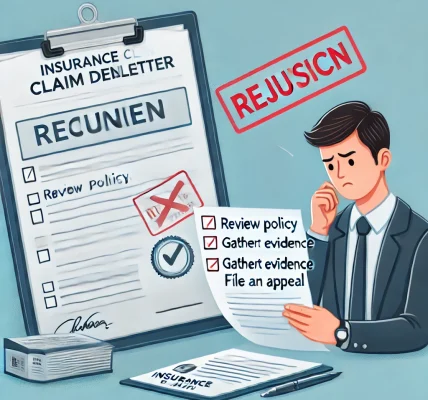Insurance is a financial safety net, providing individuals and businesses with coverage against unforeseen losses. However, fraudulent claims have become a growing concern, costing the industry billions of dollars annually. Understanding how fraud occurs and taking proactive steps to protect yourself can ensure that your legitimate claims are processed efficiently and that you do not become a victim of insurance fraud.
This DIY guide explores various types of insurance fraud, red flags to watch out for, and practical strategies to safeguard your claims.
1. Understanding Insurance Fraud
Insurance fraud occurs when someone deliberately deceives an insurance company for financial gain. It can be committed by policyholders, claimants, service providers, or even insurance employees.
Types of Insurance Fraud:
- Hard Fraud – Intentional deception, such as staging accidents or falsifying claims.
- Soft Fraud – Exaggerating damages, inflating claim amounts, or misrepresenting information to receive a higher payout.
- Fraud by Third Parties – Includes scams by contractors, medical providers, or repair shops inflating invoices.
Common Insurance Fraud Schemes:
- Auto Insurance Fraud: Staged accidents, fake injuries, or inflated repair costs.
- Health Insurance Fraud: Billing for unprovided services or unnecessary treatments.
- Homeowners’ Insurance Fraud: Exaggerating damage from fires, floods, or natural disasters.
- Life Insurance Fraud: Faking death or misrepresenting health conditions.
Recognizing these schemes can help you avoid being manipulated or wrongly accused of fraudulent activity.
2. Red Flags of Insurance Fraud
While insurance companies have systems to detect fraud, individuals must also be vigilant. Here are key red flags to watch for:
- Pressure to File Quickly: Fraudsters may push you to file a claim without verifying the details.
- Incomplete or Inconsistent Information: Vague descriptions, missing documents, or conflicting statements.
- Exaggerated Losses: Sudden reports of extreme damages without prior signs of issues.
- Unlicensed Contractors or Service Providers: Be wary of businesses with no verifiable credentials.
- Third-Party Solicitation: If someone approaches you offering to help inflate your claim, be cautious.
By identifying these warning signs early, you can avoid being drawn into fraudulent schemes and protect your legitimate claims.
3. How to Protect Yourself from Insurance Fraud
A. Secure Your Personal Information
✔ Never share your insurance policy details with unverified sources. ✔ Be cautious of unsolicited calls or emails requesting sensitive information. ✔ Keep copies of all insurance-related documents in a secure location.
B. Verify All Claim Information
✔ Double-check all claim documents before submission. ✔ Ensure all reports and estimates are provided by licensed professionals. ✔ Take photos and keep records of damages before repairs begin.
C. Choose Trusted Service Providers
✔ Work only with licensed contractors, repair shops, and medical providers. ✔ Get multiple repair estimates to avoid inflated costs. ✔ Verify the legitimacy of companies before making payments.
D. Report Suspicious Activities
✔ If you suspect fraud, report it to your insurance company immediately. ✔ Contact the National Insurance Crime Bureau (NICB) or relevant authorities. ✔ Keep a record of all communications with your insurer and service providers.
4. Filing a Legitimate Claim: Best Practices
If you need to file an insurance claim, follow these best practices to avoid any issues:
Step 1: Report the Incident Promptly
- Notify your insurer as soon as the event occurs.
- Provide accurate and complete details of the loss.
Step 2: Gather Evidence
- Take clear photos and videos of the damage or injury.
- Collect statements from witnesses if applicable.
- Keep receipts for repairs, medical expenses, or lost items.
Step 3: Work with Your Insurance Adjuster
- Cooperate with the insurance adjuster’s investigation.
- Ensure all documentation supports your claim.
- Ask for a written explanation if there are delays or disputes.
Step 4: Review the Settlement Offer
- Compare the offer with your policy coverage.
- Negotiate if you believe the payout is too low.
- If necessary, seek legal or professional advice.
5. What to Do If Your Claim Is Denied
Even legitimate claims can sometimes be denied. If this happens: ✔ Review the denial letter carefully and understand the reasons. ✔ Gather additional evidence to support your claim. ✔ File an appeal following your insurer’s procedures. ✔ Consult an insurance attorney if needed.
Final Thoughts
Insurance fraud can impact both individuals and the industry, leading to increased premiums and denied claims. By staying informed, verifying all claim details, and working with trustworthy professionals, you can protect yourself from fraud and ensure your legitimate claims are processed smoothly.



